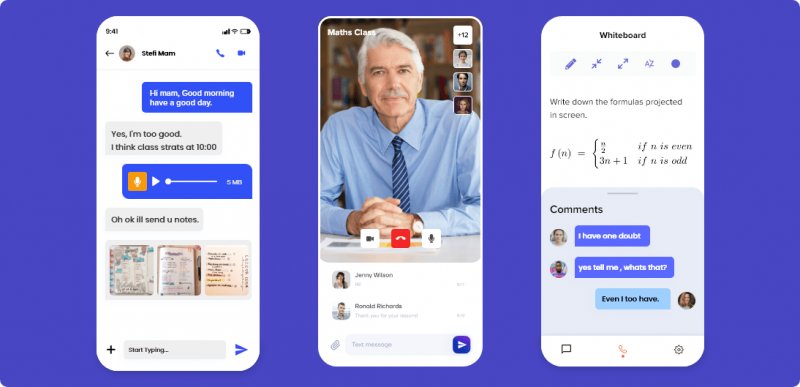Can your Video Conferencing Platforms be HIPAA Compliant?

Things have changed drastically over the course of the last year and we all hoped that this pandemic will be over in no time.
But a year later, we are here, still working at home and using our best-loved phrase, “You’re on Mute.”
Without technology, we would have been non-existent, it has become the most important thing in our lives as it helps most of us to still hold a job and keep our sanity in check.
Similarly, digital software like Zoom for Video conferencing has attained a lot of attention of late and the people have turned themselves to communicate remotely. Whether to connect for work, chat with loved ones or to communicate with clients, video conferencing has been the need of the hour ever since the pandemic.
Around 80% of people want to interact with their doctors and other healthcare providers through video conferencing, according to a survey by a global FICO.
Table of Contents
What is HIPAA-compliant in Video Conferencing?
HIPAA-compliance means any software that stores or communicates data between two users such as a patient’s health information needs to obey stringent security and privacy standards. Below are some of the details in video conferencing that needs HIPAA compliance.
Basics of HIPAA-compliant Video Conferencing

- Name/social security number
- Telephone number or email address
- Home or business address
- Device identifiers like serial numbers
- Insurance or Health plan number
- Photographic images or video content
- Payment information
- Vehicle identifiers (license or registration number)
- IP (Internet Protocol) address or web URLs
- Biometric identifiers such as fingerprint, retina scan or voice recording
Essentials for HIPAA Implementation
To ensure the transmission of communication is HIPAA-compliant, there are a lot of measures taken care of particularly when it comes to the crowded video-conferencing landscape since the non-compliance here is running rife.
Now, let us see at some of the key considerations:
End-to-end encryption
When it comes to video conferencing, one of the critical considerations is the unauthorized third parties and bad actors that cannot access the video call or to generate the data in the course of the call. It now raises the question of the data encryption such as,
Does your video conferencing solution use encryption? How easy is the access to the encryption key?
The golden standard of HIPAA compliance is the end-to-end encryption as it means only the devices that have access to make the live video call app will have access to the encryption key as well.
Peer-to-peer connection:
The next main point to consider about HIPAA compliance is routing.
Does the video connect your handheld device or computer directly to your employer/patient device, or is it getting routed through a server?
Peer-to-peer routing offers security with much faster and better video conferencing if you connect directly. Yet, your video conferencing tool must be end-to-end encrypted for true HIPAA-compliance.
Business Associate Agreements:
BAAs (Business Associate Agreements) are one of the major essential aspects of the HIPAA-compliance. To ensure the protected information is appropriately safeguarded, BAA agreement stipulates all concerned parties to take the active measures.
Vendor access and auditing
HIPAA compliance’s another crucial consideration is the access given to the people for sensitive personal data.
Video conferencing solutions may look like it protects the data, but how can the data be protected from their own employees?
To prevent unauthorized users from accessing any information, vendors should have administrative, physical, and technical safeguards in place. Therefore, the Video conferencing tool itself must have a feature to protect user authentication and password.
Accidental violations:
Tools like Zoom might technically qualify for the HIPAA-Compliant, if they just turn off certain features for the users.
But you can still violate the HIPAA regulations by sending an invitation to a patient or client or involuntarily storing their information in your zoom account.
And that’s where you will require a vendor to partner to understand the regulations of HIPAA in and out to help you stop violating involuntarily.
Tips for choosing a HIPAA-compliant video-conferencing vendor
Choosing the best HIPAA-compliant video conferencing tool is really challenging. However, here are some quick points to look out for:
- Ask whether they offer end-to-end encryption and what they use
- Make sure they offer a BAA
- Check whether the routing is through peer-to-peer or a server
- Question the access control and audit control standards
- Find out their security standards
- Read testimonials and reviews from professionals who have used their software
Why choose CONTUS MirrorFly?
Mirrorfly’s high-quality 1-to-1 video call api is fully HIPAA-compliant, that means any industry such as the healthcare, educational institutions, on-demand service platforms and retail business people can safely send protected health information using the CONTUS Mirrorfly API.
CONTUS MirrorFly will help you to ensure that you meet all your compliance obligations.
With this knowledge, you can be rest assured that your video calls with patients and discussions between colleagues/customers or interactions between teachers and students will remain securely encrypted and 100% HIPAA-compliant.
